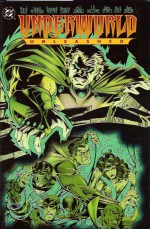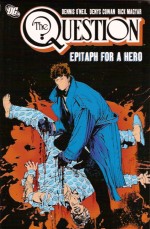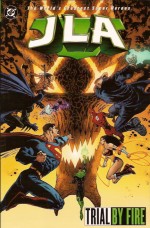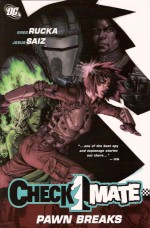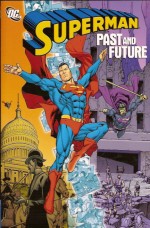
By various (DC Comics)
ISBN: 978-1-84856-074-1
In the post-Crisis on Infinite Earths DCU, time travel became a really big deal. So when the Metropolis Marvel did break the fourth dimension, as in the superb Superman: Time and Time Again the gimmick became as big a deal as the plot. But there was a period when all history and the implausible future was just a short spin away…
Superman is the comicbook crusader who started the whole genre and in the decades since his debut in 1938 has probably undertaken every kind of adventure imaginable. With this in mind it’s tempting and very rewarding to gather up whole swathes of his inventory and periodically re-present them in specific themed collections, such as this delightful confection of time-busting escapades from the many superb writers and artists who have contributed to his canon over the years.
The fun begins with a tale from Superboy #85 (1960) which reiterated an iron-clad cosmic law of the Silver Age: “History Cannot Be Changedâ€: as the Smallville Sensation tragically discovered in ‘The Impossible Mission!’ (by Jerry Siegel and George Papp) when he traveled to 1865 to prevent the assassination of Abraham Lincoln, fate will always conspire to make events unfold along a predestined course…
A different theory was in play in 1947 when the Man of Steel broke the time barrier for the first time to collect famous signatures for an ailing boy in ‘Autograph, Please!’ (Superman #48, by Siegel and John Sikela), whilst in ‘Rip Van Superman’ (Superman #107, 1956 by Bill Finger Wayne Boring and Stan Kaye Siegel) an accident placed the hero in a coma, trapping him in a future where he was redundant…
The 1960s were the heyday of time travel tales with the Man of Tomorrow and his friends nipping forward and back the way you or I (well me, anyway) would pop to the pub. In the brilliantly ingenious ‘Superman Under the Red Sun!’ (Action Comics #300, 1963 by Edmond Hamilton and Al Plastino) our hero is dispatched to the far, far future where the sun has cooled, and undergoes incredible hardship before figuring out a way home.
In ‘Jimmy’s D-Day Adventure!’ the boy reporter travelled to World War II to solve a bizarre mystery only to end up a trusted member of Hitler’s inner circle, (Superman’s Pal Jimmy Olsen #86, (1964, Leo Dorfman, Curt Swan and George Klein) whilst his Daily Planet colleague almost ripped apart the fabric of reality by nearly becoming Superman’s mum in ‘Lois Lane’s Romance with Jor-El!’ (Superman’s Girlfriend Lois Lane #59, 1965, by Hamilton and Kurt Schaffenberger)
One of the boldest experiments of the decade occurred when Hamilton, Swan and Klein introduced us to ‘The Superman of 2965!’ (Superman #181, November 1965) for a series of adventures starring the Man of Steel’s distant descendent. A two-part sequel appeared the following summer in Action Comics #338-339, ‘Muto… Monarch of Menace!’ and ‘Muto Versus the Man of Tomorrow!’ and a postscript tale appeared in World’s Finest Comics #166 entitled ‘The Danger of the Deadly Duo!’ teaming that era’s Batman and Superman against Muto and the last in a long line of Jokers.
For Superman #295, Elliot Maggin, Curt Swan and Bob Oksner produced ‘Costume, Costume – Who’s got the Costume?’ (1976) a neat piece of cross-continuity clean-up that featured DC parallel worlds including those of Kamandi and the Legion of Super-Heroes. From that same year ‘Superman, 2001!’, by Maggin, Cary Bates Swan and Oksner is an imaginary Story (a tale removed from regular continuity) featured in the anniversary issue Superman #300, and posited what would have happened if baby Kal-El’s rocket had landed in the Cold War era of 1976 – an intriguing premise then which looks uncomfortably like the TV series Smallville to my jaded 21st century eyes.
This fascinating collection concludes with ‘The Last Secret Identity’ (from 1983’s DC Comics Presents Annual #2, by Maggin, Keith Pollard, Mike DeCarlo and Tod Smith, which introduced the first incarnation of Superwoman, when a time-travelling historian landed in Metropolis only to become the subject of her own research.
These tales are clever, plot driven romps far removed from today’s angst-heavy psycho-dramas and unrelentingly oppressive epics. If you’re after some clean-cut, wittily gentle adventure there’s no better place to go – or time…
© 1947, 1956, 1960, 1963, 1965, 1966, 1967, 1976, 1983, 2008 DC Comics. All Rights Reserved.



